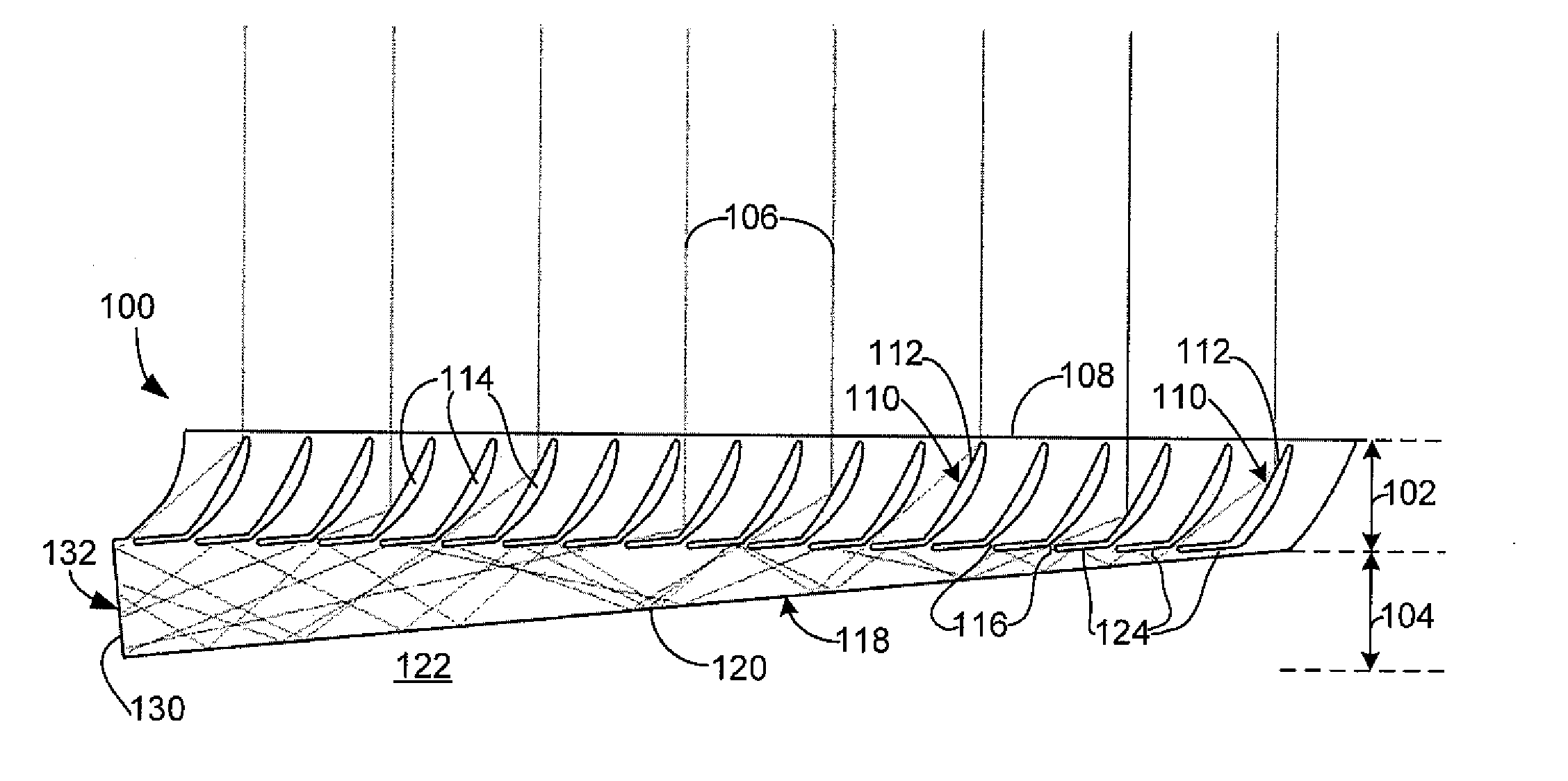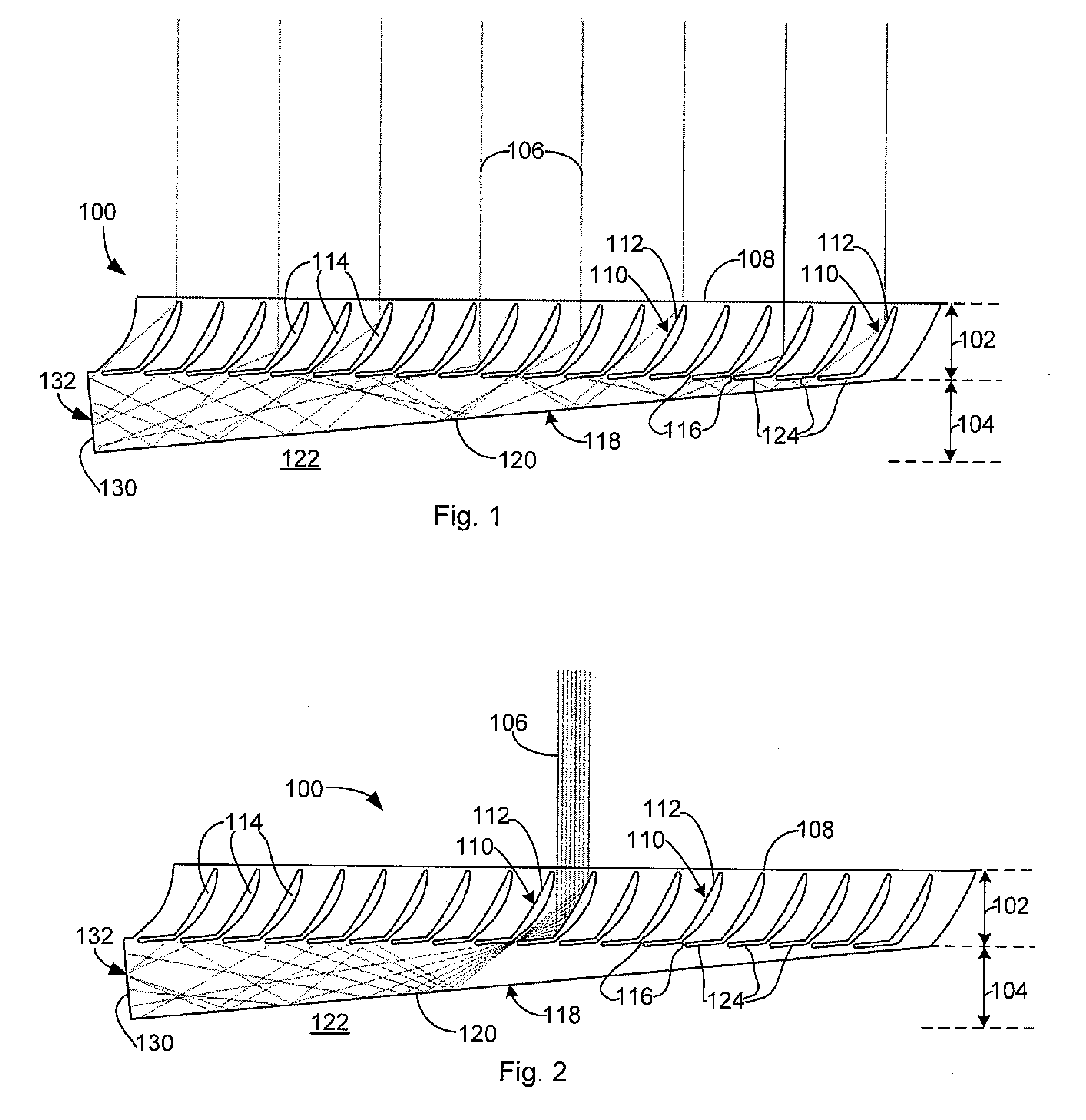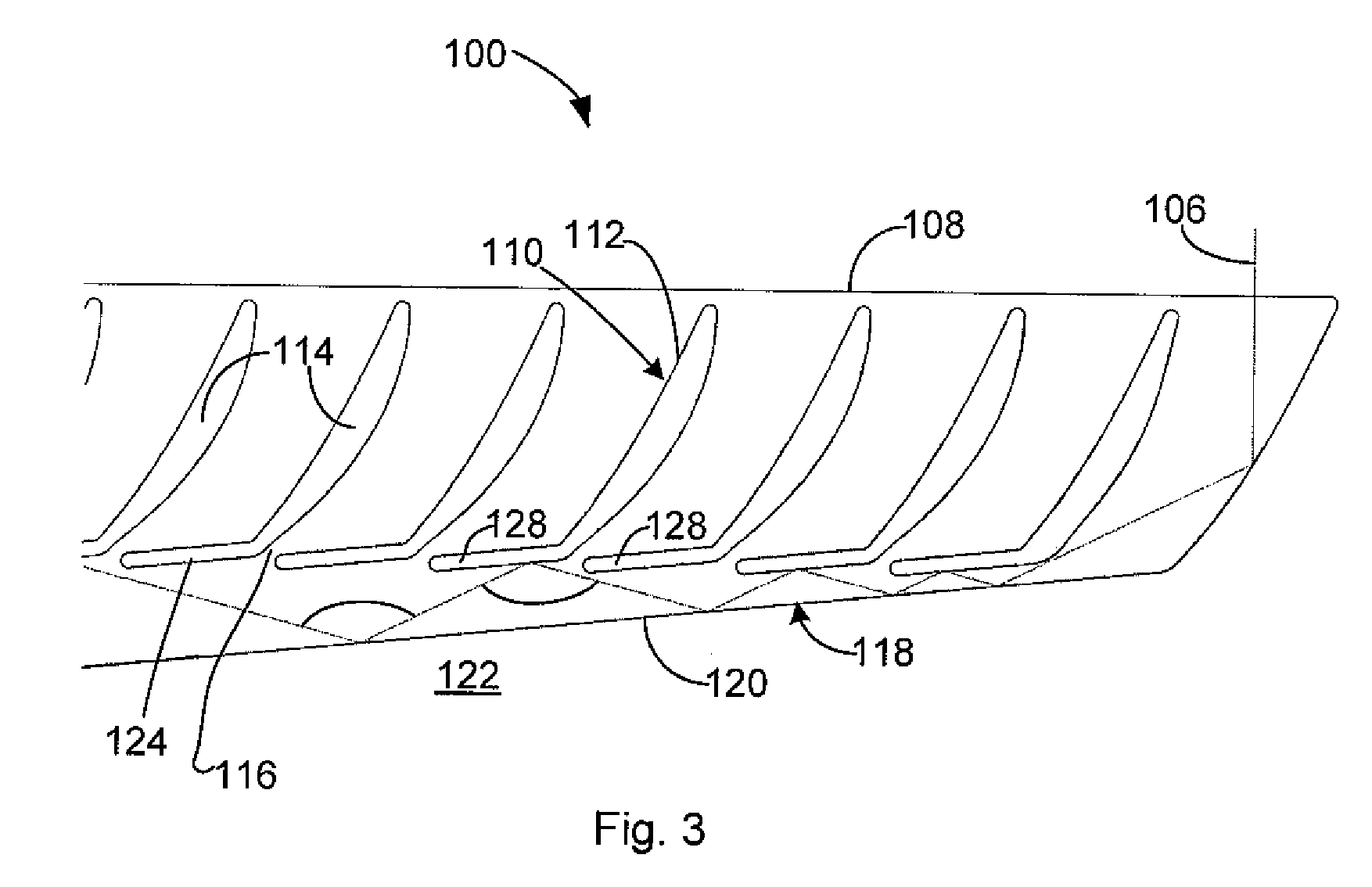Light-guide solar panel and method of fabrication thereof
a technology of solar panels and light guides, applied in the field of solar panels, can solve the problems of bulkiness, high cost of pv cell materials, and inability to meet the needs of cpv modules, and achieve the effects of reducing the cost of material costs, and reducing the cost of pv cell materials
- Summary
- Abstract
- Description
- Claims
- Application Information
AI Technical Summary
Benefits of technology
Problems solved by technology
Method used
Image
Examples
Embodiment Construction
[0101]Generally, the present invention provides a solar energy system that uses a light-guide solar panel (LGSP) to trap light inside a dielectric or other transparent panel and propagates the light to one of the panel edges for harvesting by a solar energy collector (SEC). This allows for very thin modules whose thickness is comparable to the height of the SEC, which can be, for example, a PV cell, at the edge of the module, thus eliminating the depth requirements inherent in traditional solar energy systems such as CPV systems. Light striking the LGSP is redirected and trapped internally so that it exits the panel through one of its edges where a SEC receives it.
[0102]LGSPs of the present invention can be combined in clusters to make modules. The LGSP optics can be designed structurally to be largely self-supporting, meaning that they do not require any substantial external enclosure to maintain their shape and orientation. A full enclosure can be added to the LGSP. As will be des...
PUM
| Property | Measurement | Unit |
|---|---|---|
| refractive index | aaaaa | aaaaa |
| critical angle | aaaaa | aaaaa |
| critical angle | aaaaa | aaaaa |
Abstract
Description
Claims
Application Information
 Login to View More
Login to View More - R&D
- Intellectual Property
- Life Sciences
- Materials
- Tech Scout
- Unparalleled Data Quality
- Higher Quality Content
- 60% Fewer Hallucinations
Browse by: Latest US Patents, China's latest patents, Technical Efficacy Thesaurus, Application Domain, Technology Topic, Popular Technical Reports.
© 2025 PatSnap. All rights reserved.Legal|Privacy policy|Modern Slavery Act Transparency Statement|Sitemap|About US| Contact US: help@patsnap.com



